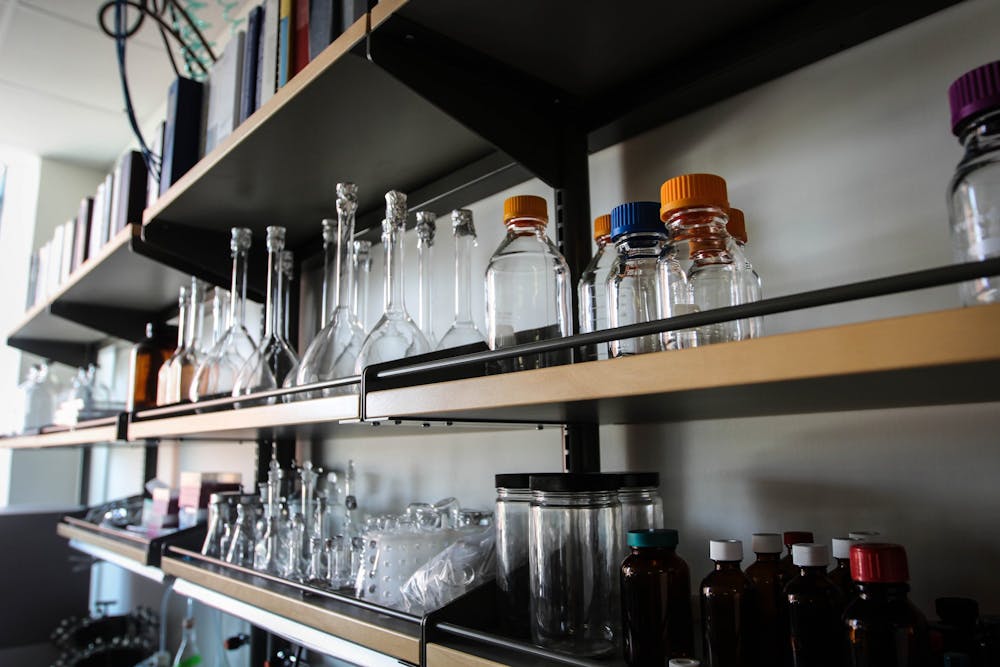After ASU announced the transition to make all classes online for the rest of the spring semester, science professors have found a way to make online labs more personable and entertaining for their students.
Samuel Peoples, a member of the instructional and clinical faculty at ASU, said while the online transition was anticipated due to the Zoom training during spring break, he was still leery of finding a way to smoothly transition organic chemistry to an online platform.
“Initially I didn’t even think it was going to be possible to turn labs into online experiments — especially organic chemistry,” Peoples said.
Given that lab experiments are a hands-on form of learning, Peoples said he wanted to find a way to translate that feeling into the online classes.
“I was talking with (School of Mathematical and Natural Sciences professors Carl Wagner and Janet Krahn) about what we could do and spur-of-the-moment decided to record the experiments, and we would pretend like the students were our lab partners,” Peoples said.
Peoples believed that if he were able to make videos of the experiments, it would help give students the same understanding they would have had participating in the lab experiment in person.
Peoples also said the labs have been so successful that other faculty have been working with him to make the template part of their online curriculum as well.
“Right now I have been collaborating with more faculty, and it looks like we’re going to be expanding this type of technique to some of our other labs as well, for some of our general chemistry labs and even some of our biology labs” Peoples said.
The lab videos were created with the help of Krahn and Wagner because all three teach organic chemistry and decided collaborating would benefit all of their classes.
Peoples said he also added trailers before each lab lesson in order to engage the students in advance while making them laugh and was pleased with the results.
“Students laughing for any reason in organic chemistry is shocking to me,” he said.
Krahn also mentioned that while she is proud of how successful the videos have been, it would not have been possible without the students being so willing to adapt.
“I am amazed at how well our students have adapted. I think they've really accepted things very well,” Krahn said. “And that's really nice to see because it's kind of going to be a big change.”
Hundreds of universities throughout the country have transitioned online, including all of Arizona's major universities.
As classes have made the transition, teachers have been forced to find ways to make their classes relevant for their students, some of which have been more difficult than others.
However, Krahn said that as lessons have continued, students are giving positive feedback, with some even saying the classes are more comprehensible now than before.
“I actually had a couple students comment that they like it better in some ways because there is explanation as things were done, whereas when they are in the lab, sometimes they feel like they're doing something, but they're not exactly sure why or how it fits in,” Krahn said.
Wagner said while the labs have been successful, he has also had to adapt and adjust his lessons to work with the online curriculum.
“You know, in our hectic rush sometimes we would forget certain things in the lab experiments such as measures, certain values and so sometimes there has to be a little flexibility,” Wagner said.
While the transition has been fairly quick, Peoples said given some time, this method of teaching could be utilized for students who live around the world who could have access to courses which were originally exclusively taught online.
“This gives us a great template to work with. We came up with this idea spur-of-the-moment ... give us a break, and I think we could potentially use this in the future for several other lab courses,” Peoples said.
Reach the reporter at slbrinso@asu.edu or follow @Stacy_L_Anders on Twitter.
Like The State Press on Facebook and follow @statepress on Twitter.




